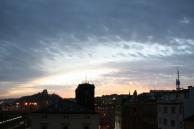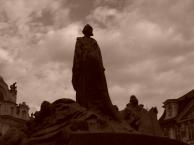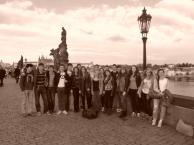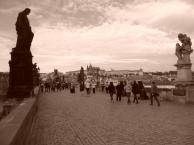Profile
Blog
Photos
Videos
It was on Saturday, the second day of our action packed tour, when Annie, Sophie, Helena, Mrs Cashmore and I visited the prolific Prague Music Museum, located in the heart of the beautiful city. Finding the building proved to be a challenge in itself as we regularly took wrong turns down different alleyways but we finally reached our destination, after only about an hour of walking.
To start with, the museum displayed writings and drawings about various dances, such as the Polka and the Waltz. I learnt several of the characteristics of these dances including the style, tempo and dynamics of the music, while some of us also had the chance to try dancing to a classic polka, guided by footprints on the floor which showed us where and when to step to the music.
After I failed the polka miserably, we were treated to some fascinating, yet bizarre modern instruments, nearly all of which I never knew existed. What intrigued me the most were some of the quarter tone instruments, in particular a quarter tone piano. As I play the instrument myself, I have grown accustomed to there being only 12 possible notes you could play (discounting the octaves of course) but this particular piano had 24! I heard it being played and it did sound strange, maybe due to the fact that I had never previously heard 12 of the notes played. Nonetheless, it was mesmerising stuff. I also wondered how one would write the music to a quarter tone piano. Well, maybe there wasn't a way to do so hence why so few are around today!
The museum also presented many different collections of classic orchestral instruments, describing and displaying their evolution over the last century. The piano for instance started off half the size with about half the notes (that barely made a sound) that it has today; while a recorder went from a small piece of wood with a few holes into a slightly larger piece of wood with holes. Perhaps the most unusual of all the instruments in the building was none other than a double-sided violin, quite literally made of two identical violins, which were stuck together back to back. Most of us just couldn't figure out how, let alone why, someone would play such an eccentric instrument.
On the whole, it was a superb outing; I think we all learnt something new, but more importantly, I think we all had fun doing so. Thank you to Mrs Cashmore for escorting us to the museum and also to Mr Smith and Mr Kitzinger for giving us the opportunity to visit such an interesting place. In my opinion, it was definitely one of the highlights of the incredibly, successful tour - one which I'll never, ever, ever forget. Well, hopefully.
Ed Blowers
- comments










